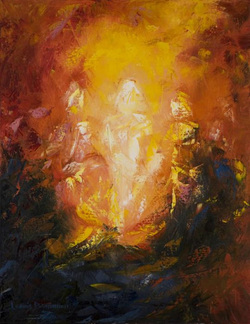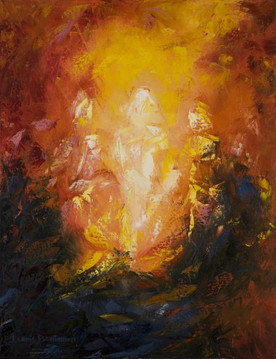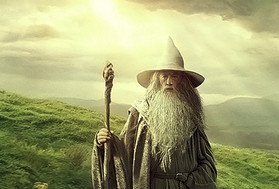 I can hear the rhythm Of the Lion of the tribe of Judah He's doing a new thing So we're singing a new song He's not a baby in a manger anymore He's not a broken man on a cross He didn't stay in the grave And He's not staying in heaven forever! Listen. Can you hear it? Are your ears open? The natural rhythm of life ... wake, sleep, live, die, eat, drink, work, play, laugh, cry ... it fills every moment of our existence. Its so much part of our very being that we don't even think about it. The rhythm of the Lion of of the tribe Judah ... now that's something else. Do you hear it? Can you feel it? Are you attuned to the sound of Gods rhythm? People walking around With their fingers in the their ears Singing, "Da da da da da." "I don't want to hear the sound of the coming King." The rhythm of the Word, that same voice that spoke our world into creation speaks to you and I. It is not the voice of our making. It says things that comfort us, and it says things that we do not want to hear. And the Word moves with the beat of a heart once broken, and it calls to us to say, will you dance? Will you move with me? Will you go where I go? Will you forsake your agenda for mine? Once again I'm going to shake Everything that can be shaken Once again I'm going to break Everything that can be broken This is not a strange theology. This is only the story of the Word. As we listen to God, as a community and as individuals, His desire is that we hear His rhythm and move with him. Like David who danced before the Lord we may need to take of all our encumbrances, even such that it shocks those around us. But ... when we move with Him, so he rejoices. He desires to exult over us, to sing over us with Joy. Are you ready? Are you ready for this? This is not a game. References: The Lion of the Tribe of Judah: Revelation 5:5 Shaken: Hebrews 12:26-29 Exult: Zephaniah 3:17 The song: Misty Edwards -- see http://tinyurl.com/aepl55b (quick listen from 3:25 in the video)
0 Comments
 (Stephen Middelkoop) Transfiguration is not just about us - all things created in Heaven and on Earth are being restored, reconciled, transformed into God’s dream for His world. Desmond Tutu speaks of the Principle of Transfiguration. ‘Nothing, no one, and no situation is un-transfigurable.’ The whole of Creation waits expectantly for its transfiguration… when it will be translucent with divine glory.’ We are made to collaborate with Christ as He works to bring the ultimate transfiguration of the world. In those moments when our hearts are pierced - when God allows us to see more truly and deeply – it is then that we too are set on a journey of transformation. Moments of transfiguration, if we are open to them can lead us to be agents of transformation on the ground – wherever that ground may be. Feeding the hungry, clothing the naked, visiting the sick or the imprisoned. Or standing before the powers of the world calling for change. As we journey towards our final transfiguration we are involved in the transformation and redemption of our world. Peter wanted to build shelters for Moses, Elijah and Jesus in an attempt to keep holding onto the moment – but Jesus leads them back down the mountain – into a messy situation where a young boy needed healing. The gift of being part of the transfiguration and the glory of God was something the disciples needed to take with them. It was a gift that would enable them to work for the transformation of the pain and suffering they were going to experience around them each day. Archbishop Tutu again: When we realize that we are working toward the ultimate transfiguration of the world, today’s suffering is put in its place, in its rightful perspective. And we can suffer it, knowing it does not have the final word. The pain is transformed, redeemed and now somehow serviceable. Pain, if not transformed, will be transmitted to others. If we do not allow our pain, our suffering to be transformed, it will be spread out to others or, in the very least, to other parts of our own life. Un-transformed pain spreads – into genocide, xenophobia, rape, greed and abuse. But when our pain is transformed it contributes to the healing of the world. How we decide to respond to the pain & suffering is a very spiritual matter. The rape, abuse and death of a 17 year old child is a tragedy – and it is a tragedy that is happening every few minutes in our country and around the world. It is a tragedy that cries out to be transformed – the pain of that young girl cries out for the people of this country and especially the men of this country to be transformed. There are no excuses and no acceptable reasons for what happened to her and it must not happen again. The transfiguration that will enable this change must happen in all of us. It must begin in me. There is so much happening in the world, in our communities, that cannot be fixed - no amount of rushing around will solve all these problems. However, they can be felt and suffered. As we have seen through our study of prayer we can indeed make space for this – we can feel and suffer the pain of the world with Christ. The spirituality of transformation is a way of life that embraces suffering because it knows it is ultimately redemptive; and in stillness finds the resources to hold it until it is transfigured. The suffering of the Cross leads to our redemption but only as we allow Jesus to be transformed into the Christ and our lives to be transformed into His likeness. And so after spending time in worship – after spending time on the mountaintop enjoying the glory of Jesus in the Eucharist and the singing of our hearts – we leave this place to face the world outside – the un-transfigured world of our days. We are offered this glimpse of God’s glory to strengthen us, to give us a vision for each day, to encourage us on our mission. We have a mission to share the joy and the beauty and the power of the transforming nature of God and the Holy Spirit of God. God’s Spirit burns with a light and a fire within our lives to transform us and the world around us – little by little. Let us pray for the strength and the courage to receive the gift of transformation – so that we too may show our true nature to each other – we are beloved and chosen by God. Let us pray to be transformed daily into the likeness of Jesus.  Source: http://tinyurl.com/clfckml (Stephen Middelkoop) This week is the Feast of the Transfiguration – you all know the story – Jesus takes James and John and Peter up a mountain to pray and while Jesus is praying the appearance of His face changes. The transfiguration is a remarkable moment in the Gospel story – it is one that we might be tempted to skip or move swiftly past as something we don’t understand. Except that it is one of those stories that appear largely unchanged through the three synoptic Gospels. John doesn’t mention it but in fact John’s entire Gospel appears to be a transfiguration story – as we watch the Glory of God become flesh in an inversion of this story. Paul talks about seeing Jesus as He really is and being transformed from glory into glory. And Peter reminds us in his letter of how he was an eye witness of Jesus’ majesty. I want to pick out just a few points from the passage to share with you. When Luke says that Jesus’ face changes – or is transfigured – we are not talking of Jesus changing into something else – rather it is that Jesus is briefly unveiled before the disciples. They are getting a glimpse of the true glory of Jesus the Christ. As Moses saw the glory of God light up a bush without burning it – so the disciples watch as Jesus is lit up in the Glory of the Present God. If you skip forward to the book of Revelation you come across a description of the New Jerusalem where there is no more need of a sun as Jesus provides enough light for all. The Transfiguration is one of those moments when God’s world and ours intersected and we are given a glimpse into the beauty and light of the Kingdom of heaven. Moses and Elijah appear with Jesus discussing what is coming as Jesus heads to Jerusalem. The Gospel describes it as Jesus’ departure – in the Greek the word used is Exodon – the exodus of Jesus – from this world into the new kingdom. Jesus is to lead the new Exodus - out of the slavery to sin into the Promised Land of God’s everlasting love. I was struck by the question – why the transfiguration? Why did God do this with Jesus? It is important to remember that this happens soon after Jesus has asked the disciples who they think He is and Peter has proclaimed Jesus is the Messiah. Jesus had heard it from His disciples and now He hears it from His Father – you are my Son, my Chosen one. The transfiguration was meant firstly for Jesus. It shows us both the divinity and humanity of Jesus. The glory of Jesus is clear but this moment show us a little of the humanity of Jesus as He is given the assurance of God’s love as He continues his walk to Jerusalem. The disciples are exhausted – but they are awake enough to see this. I was struck by the similarities and differences with another event– in a few weeks we will hear of them failing to stay awake as Jesus prays on another mountain in the Garden. I am left wondering if there are any potentially great moments in my faith journey I have slept through. Am I awake to all that God is doing in my life – in my Church? Am I involved enough to see God work? In a few weeks in the Garden with these same disciples there would be no bright light, no voice, no visitation by Moses and Elijah. Instead the disciples would be sleeping and the light would be the torches of the soldiers coming to take Him away. Jesus is receiving His final message of support and comfort – similar to the voice of assurance at His baptism at the beginning of His ministry – you are my Son, my beloved. But the Transfiguration was also for the disciples – that is why Jesus brought them along. Jesus tells them not to tell anyone what has happened – sharing it too soon would decrease its value. This event when they remembered it would enable the disciples to keep going in the face of hardships and doubt. It would give them the courage to continue speaking when their voices were threatened and the nights were dark and lonely. Later, the apostle Peter wrote, “For we did not follow cunningly devised fables, when we made known to you the power and coming of our Lord Jesus Christ, but we were eye witnesses of his majesty.” (1 Peter 1:16) And then the Transfiguration has great meaning for us today – we too catch a glimpse of the glory of God shining forth in Jesus. We are able to see that Jesus is not just a man, but the light of the world – the glory of God. We can no longer dismiss Jesus as just a man – we have seen His true nature – we have seen the glory of the Christ who will return to transform the whole earth into the Kingdom of God. And then we hear the voice of God say – this is my Son, listen to Him. As we read the scriptures we are called to allow Jesus’ words to transform us – to transfigure us until we too grow into God’s likeness. Our times of worship, prayer and teaching and our sharing communion together at the Lord’s Table are a means of grace where we come face to face with Jesus. The more time we spend with Jesus the more God is revealed to us and in us and so through us to the world.  “If more of us valued food and cheer and song above hoarded gold, it would be a merrier world.” So says one of the Hobbits. So how do we respond to explicit and implicit representations of spirituality in the media that surrounds us. Because this age is immersed in media, we need to have some consideration as Christians.  Walking into a church building as a newcomer can be very threatening. Yet this is supposed to be a welcoming place. Why do people feel threatened, what do we do to make it worse or make it easier? How can I do something different to make visitors feel at ease?
|
Important: The views expressed on this blog do not necessarily reflect the official position of our church
Like to Write? Archives
June 2015
|


 RSS Feed
RSS Feed

